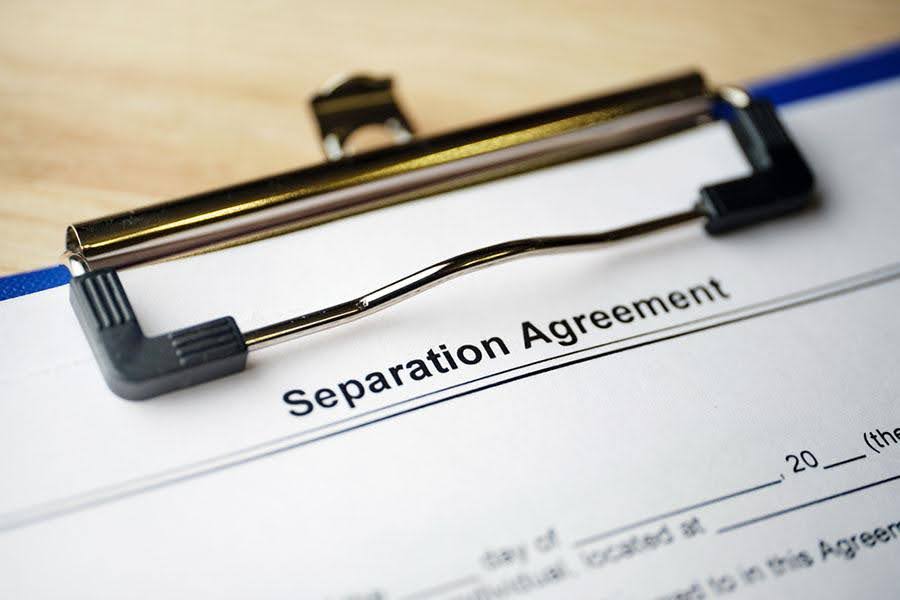Looking for an alternative to divorce? You are not alone. Many couples opt to separate and live apart while they clarify essential considerations such as financial responsibilities and child custody arrangements. If these circumstances apply to your marriage, you can now learn how to file for legal separation in California.
From understanding the requirements to completing the paperwork, we are here to provide you with the necessary guidance, support, and legal expertise. Understanding how to properly navigate the process can help you reach a favorable outcome and avoid potential pitfalls throughout the legal process.
How to File for Legal Separation in California
In California, the legal separation process is similar to the divorce process. The main difference between these two marriage dissolution options is the outcome. With a legal separation, you retain your status of being legally married.
While the divorce will dissolve your marital union, legal separation allows you to live apart while having legally separate property, financial, and parental responsibilities. Legal separation can be temporary, whereas divorce is final.
Legal separation provides the same responsibilities and protections as divorce. You can also take advantage of certain benefits of being married, such as health insurance and inheritance. You cannot remarry after separation, but you can request the court to make orders, as in divorce.
This can be beneficial for various reasons, including religious and personal beliefs, financial considerations, a break from marital obligations, or hope of reconciliation. Here are some essential steps to make your journey as smooth as possible.

Requirements for legal separation in California
Before we explore how to start a legal separation in CA, let’s take a look at the requirements you need to comply with in order to accomplish it. While you can handle such a case independently, consulting a professional can be significantly beneficial.
Engaging with the best divorce lawyers California has to offer can give you valuable guidance. Such legal experts can assist you with the paperwork, represent you in court, and protect your rights and interests during the process.
At Moore Family Law Group, we specialize in handling cases in the family law field. As licensed professionals, we have the knowledge and experience to guide you through California’s legal landscape and inform you about your legal options.
Residency requirements
If you are planning on starting a legal separation case, you may wonder whether you qualify for one. What does it take to be legally separated in California? Unlike divorce, there are no time limitations that you need to meet for legal separation.
Compared to the six-month jurisdiction requirements for divorce, only one of you must live in the Golden State to establish separation. This process can also be an option if you want a divorce but don’t want to wait to meet the residency requirements.
Legal grounds for legal separation
The laws in California recognize two primary grounds for legal separation – irreconcilable differences and incurable insanity. The concept of irreconcilable differences means a ground that doesn’t require you to provide proof of fault. It must be proven in court that the other party is permanently legally incapacitated from making decisions.
Legal criteria and documentation
In California, the process of obtaining legal separation and marriage dissolution is the same. You complete the same documents but need to check the boxes that state legal separation instead of marriage dissolution.
Steps to File for Separation
Preparation
Before you begin the legal process, we recommend that you prepare adequately. The preparation stage encompasses gathering all the necessary documents, including:
- A marriage certificate
- Financial records
- Forms that the court requires (which we will discuss below)
Another way to prepare is to consult a family law attorney. Although not mandatory, consulting with such a legal professional can provide valuable information and guidance to help you better understand your rights and obligations.

Filing the petition
The legal separation process begins with filing a Petition for Legal Separation (Form FL-100) and other necessary documents. Consider that you will need to cover a petition fee or request a fee waiver if you cannot afford it.
To complete the Petition, you must provide essential information about your marriage, the grounds for your separation, and the requested relief. Another document you must complete is Summons (Form FL-110), which informs your spouse that you have initiated legal proceedings.
If you have children, you must also complete the Declaration Under the Uniform Child Custody Jurisdiction and Enforcement Act (Form FL-105). This requires you to provide information about the child’s residency and custodial arrangements.
Serving the papers
After you fill out the necessary forms for legal separation in California, you must serve your spouse with copies of the Marriage/Domestic Partnership form and the Summons. The papers cannot be served by you but can be done by:
- A professional process server
- The county sheriff
- An adult who is not involved in the case
After the server delivers the papers, the server needs to complete a Proof of Service (Form-115) and file it with the court.
Responding to the petition
Once you serve the petition and the other documents, the respondent must complete a Response to the Petition for Legal Separation (Form-120). They must respond within 30 days of receiving the papers. This document enables them to agree or disagree with the terms that you have proposed as a petitioner.
Financial disclosures
During a legal separation, both you and your spouse need to exchange financial disclosures such as assets, debts, earnings, and expenses to ensure transparency and fairness. This includes completing:
- Form FL-140 (Declaration of Disclosure)
- Form FL-142 (Schedule of Assets and Debts)
- Form FL-150 (Income and Expense Declaration)
Temporary orders
You may need temporary orders for support, custody, and visitation throughout the legal separation process. You can request these orders by filling out the appropriate forms (FL-330) in court.
Negotiating a separation agreement
To finalize the terms of your legal separation, you need to negotiate an agreement that covers terms for property division, finances, spousal support, and child custody. They must be put in writing by both you and your spouse. If you and your spouse cannot reach an agreement on crucial terms, you can opt for mediation or other alternative dispute resolution that can facilitate the process.
Finalizing the legal separation
After you fill out all of the forms and reach an agreement on crucial separation terms, it is time to finalize the legal separation process. If everything is approved between you and your spouse, your legal separation case can be resolved entirely.
If you cannot reach an agreement, upon your request, the court will then schedule a hearing during which the judge will hear arguments on both sides and review supporting evidence. After the case is heard, the judge will make orders on the issues of your legal separation, and you will have to prepare a Judgment of Legal Separation (Form FL-180). But how long does it take to get a legal separation in California?
Couples divorcing in this state have to wait at least six months from the day they serve the papers (waiting period). This doesn’t apply to legal separation. It comes into effect once the court makes an order, but you are still legally married.

Conclusion
As a court-ordered agreement, legal separation enables you to live apart and lead separate lives but remain married. If you are considering this option, in this guide, you learned how to file for legal separation in California.
The process involves several steps, from filling out the forms to negotiating an agreement and obtaining a court judgment. By following these steps, you can effectively navigate the separation process and ensure your interests are protected.




